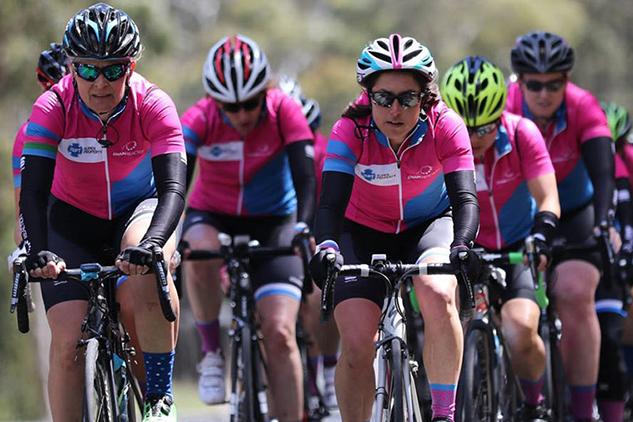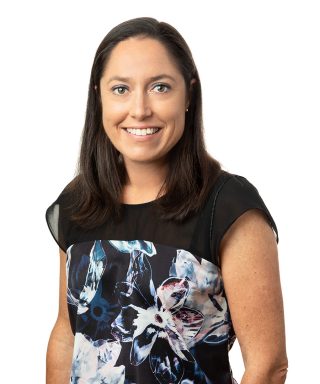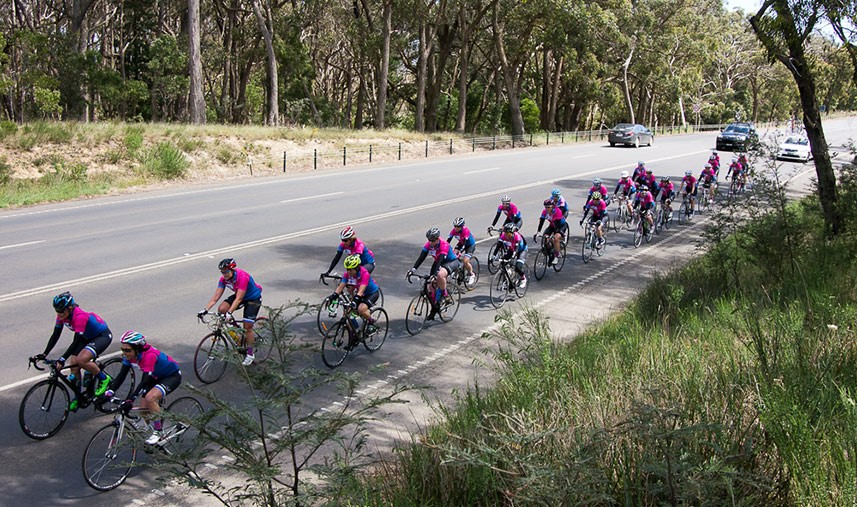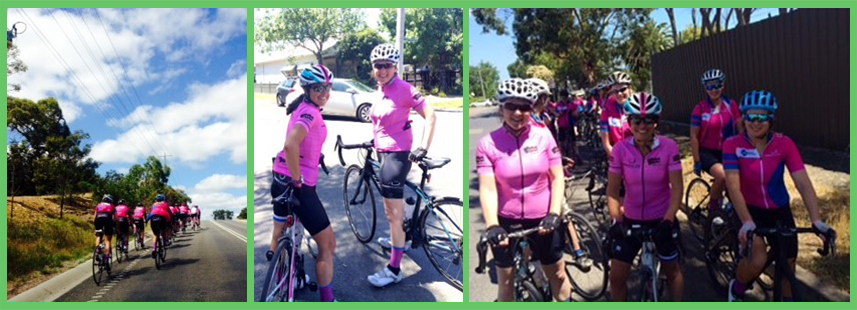The Chain Reaction Experience
Published on
08 Feb 2016


Written by
Kate Senini
Consultant Physiotherapist
Call us on: (03) 9975 4133
With the Chain Reaction Cycling Charity 7-Day Ride only 6 weeks away, it is a good time to reflect on what it means to actually complete a mammoth achievement such as cycling 1000kms in 7 days - all in the name of Charity!
The background of the big event.
I have been lucky enough to have been involved with Chain Reaction since Pure Physio opened its doors in 2010. We have provided physiotherapy and massage therapy support for all of the riders since 2011, so this will be our 6th year travelling with the 40 cyclists in the mission to complete the 7-day challenge.
Coming from a background of sports physiotherapy with further fine tuning in cycling biomechanics, I’ve forged a well-trodden path in the treatment and management of both road cyclists and mountain bikers.
But getting on the bike and being a part of the team was a whole new experience.
Following the 2015 7-day ride in New Zealand, a few of the cyclists challenged me as to why I haven’t participated in the Women’s Ride. My initial reaction was that I haven’t done 100km consecutive days of cycling for many years…and when I did it was on bridal paths on a hybrid bike with panniers through the UK and Europe. A far cry from bunch riding in a peloton of 30 women. My second thought was in regard to the time and dedication required for an event like this – could I make it work?
It is incredible what happens when one meets a really inspiring and nurturing group of people, who are all aiming to achieve a common goal. I have always been aware of, and impressed by the fact that Chain Reaction is much more than a charity. In the 10 years since its inception, Chain Reaction has become a community.
In regard to the ride.

The Women’s 300km ride was brought in 3 years ago by one very inspiring female cyclist who had completed five of the 7-day rides in total. She had identified that this distance and level of intensity may present significant challenges for many women…but that there was no reason for women in cycling to not have a greater presence.
Therefore the Women’s ride was born.
From that year it has grown significantly, and last year’s ride was completed with 30 united women. It was a more challenging 300km course around Daylesford and Macedon, and managed to raise $190K for valuable children’s charities. We were able to donate money to Radio Lollipop – a fantastic charity that was able to then build a radio studio within the Monash Medical Centre’s New Children’s Hospital facilities. We were also able to donate money to Freedom Wheels, which custom builds bikes for kids with disabilities.
These achievements go far beyond simply the tangible material provisions that they may appear to offer. They cater to the human side. To have a child with a disability be able to ride a bike and create a family outing means so much more to these families. For a seriously sick child to be able to play DJ for a day means those children who are undergoing intensive and aggressive medical treatment for various illnesses can have a piece of happiness in their day.
This touches the real humanity and emotion involved in having sick children. And that was our motivation.
Training for the Women’s 300km ride last year caused me to reflect on my practice as a physiotherapist who treats a range of cyclists with various rehabilitation programs. We are all well versed on the fact that bike set up is important; that we need to consider wind resistance; the intensity of hills; the type of road surface and the resistance it creates; and the effects of riding in a bunch. As physiotherapists, we consider all these factors when talking with patients, and when considering the best treatment plan for that patient to rid them of their injury.
But to actually put myself into the situation of the cyclist brought it all the more to life for me.
Having to think about the position of my body on my bike, and how I felt when I got tired was great for reflection. Realising what it feels like to take the brunt of the wind at the front of the pack, or be free of that resistance in the middle of the pack was again a really interesting learning curve. Understanding balance and control of the bike and the intensity of concentration required to sit right on another cyclist’s wheel as part of a slip stream, took some getting used to.
But ultimately knowing what it felt like to finish a training ride, exhausted, after a very early morning, and lots of kilometres and concentration was another string in the bow – offering a deeper knowledge of the cyclist.
Powerful Links: The Chain Reaction community.

The incredible thing about Chain Reaction is the community. A community forms friendships, it’s incredibly supportive, and everyone has a laugh. But we all found that in times of feeling exhausted, or being challenged by a steep hill, or having a windy rainy day, those experiences brought us back to the common reason we were ultimately there. For these charities, and for the incredible things they have been able to provide for the sick children, their families and friends, and the greater community.
Being tired when the alarm goes off, training in the dark at 5am, wearing so many layers in 2 degrees in the height of winter, breathing heavily as we pushed ourselves during speed training around a velodrome, and getting used to being out on the open roads with traffic. These were just some of the challenges we all faced.
But at the end of the three months of training we had become a close team, and a well-oiled machine.
We were ready to face the hills, the cold mornings, and the challenging terrain of the Daylesford spa country. And challenging it was. But the support and encouragement we all gave one another, and to see the emotion on the faces of the charity representatives at the end made the entire training experience, and completion of the ride an amazing life achievement.
Learning from the ride of a lifetime.
Chain Reaction has definitely changed the way that I approach my cycling patients. I now think more carefully about the motivation behind cycling. I think about the mateship, the social aspect, and that injury means that part of someone’s week is then missed. I think about how much wind resistance or road surface really do matter. And even more, the power of the stability and strength of the body on the bike. Having had niggles or tightness after 6 hours in the saddle, I understand and can better empathise with how a cyclist is feeling, and how easily these niggles can become injuries over consecutive days of riding. It has fine-tuned my management of these patients.
This year’s 7-day ride marks the 10th Anniversary of the charity. To mark this occasion the ride features 10 peaks over the 7 days. Commencing on March 12th in Canberra, the ride will follow a challenging route through the alpine country of New South Wales and Victoria to finish in Melbourne on Friday the 18th of March.
The riders this year are raising money for the new Monash Children’s hospital, and the Pure Physio team have been helping out with preparation behind the scenes. We have been providing biomechanical cycling assessments and advice, education and insights, and exercises to help the cyclists prepare themselves both off the bike and while clocking up the training kilometres on the bike.
I am personally really excited to be accompanying these inspiring cyclists, and the dedicated support crew again for our 6th 7-day ride. I am also really excited to keep up my training with the amazing group of women I met last year, who have become friends, mentors, and sources of inspiration. And luckily too, we’ll need to draw on all the inspiration we can get when we put ourselves to the test later this year for the next Women’s Ride.
About the Author
Kate Senini — Consultant Physiotherapist
Kate, who was a founding partner at Pure Physio in 2010, is now working exclusively in a clinical role. Helping people recover from injury and prevent future injuries has always been her true passion!
Back to blog home